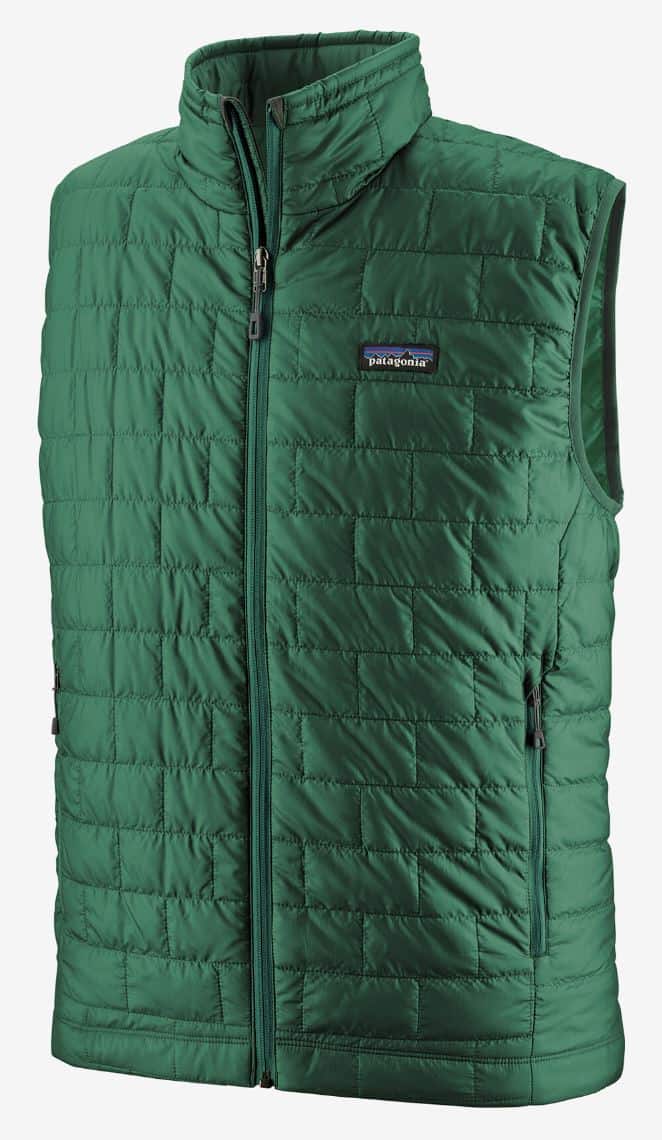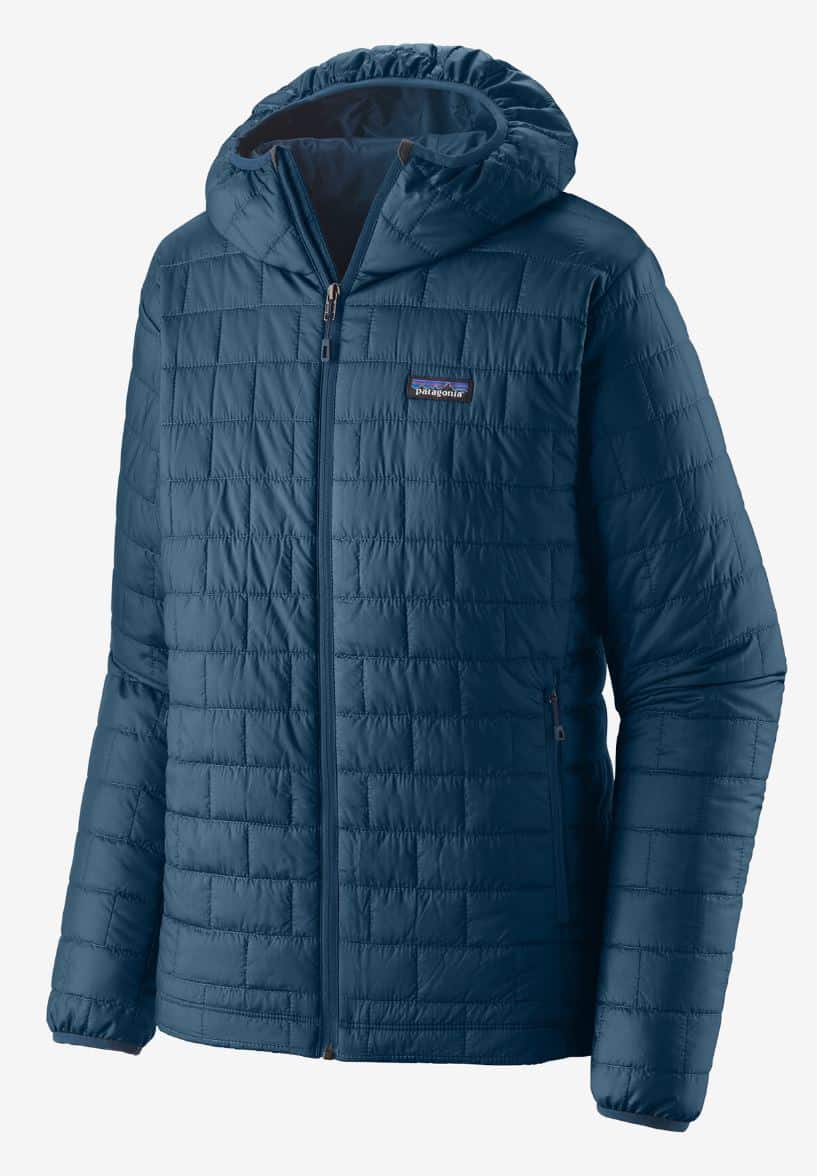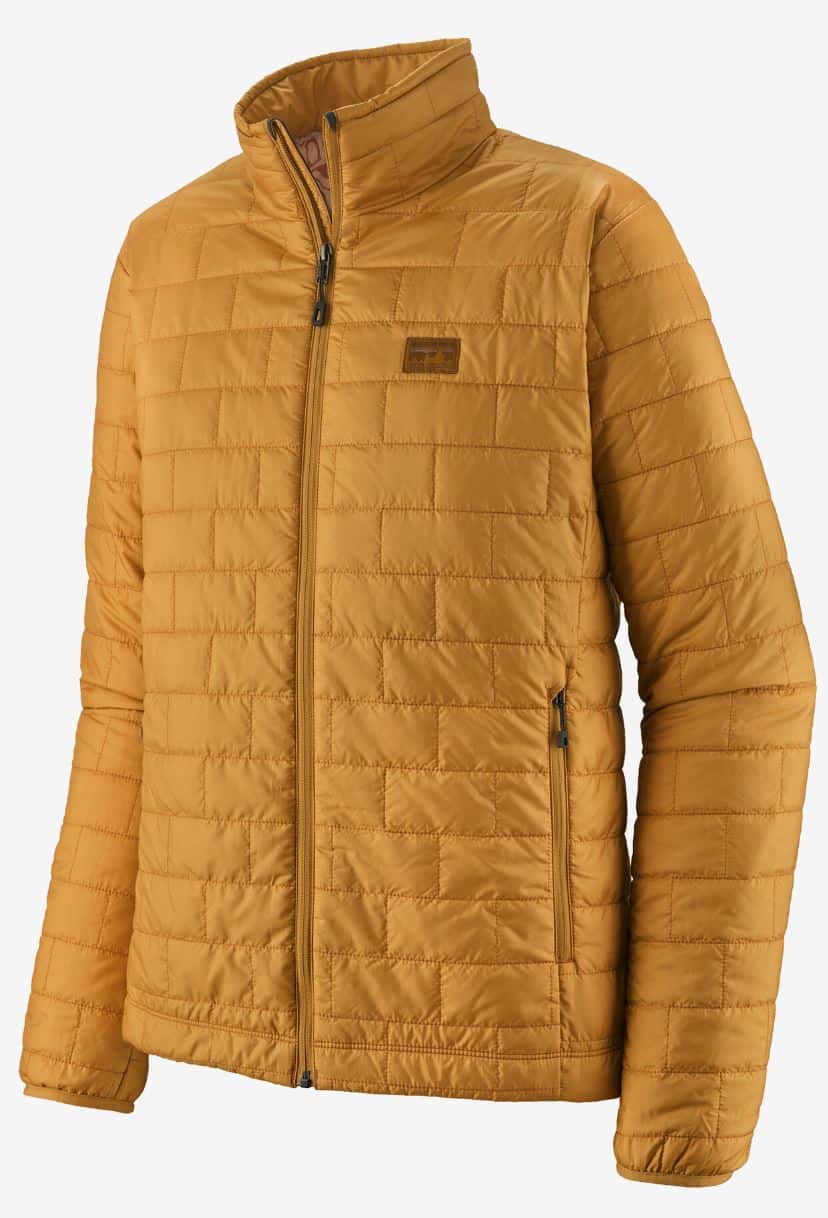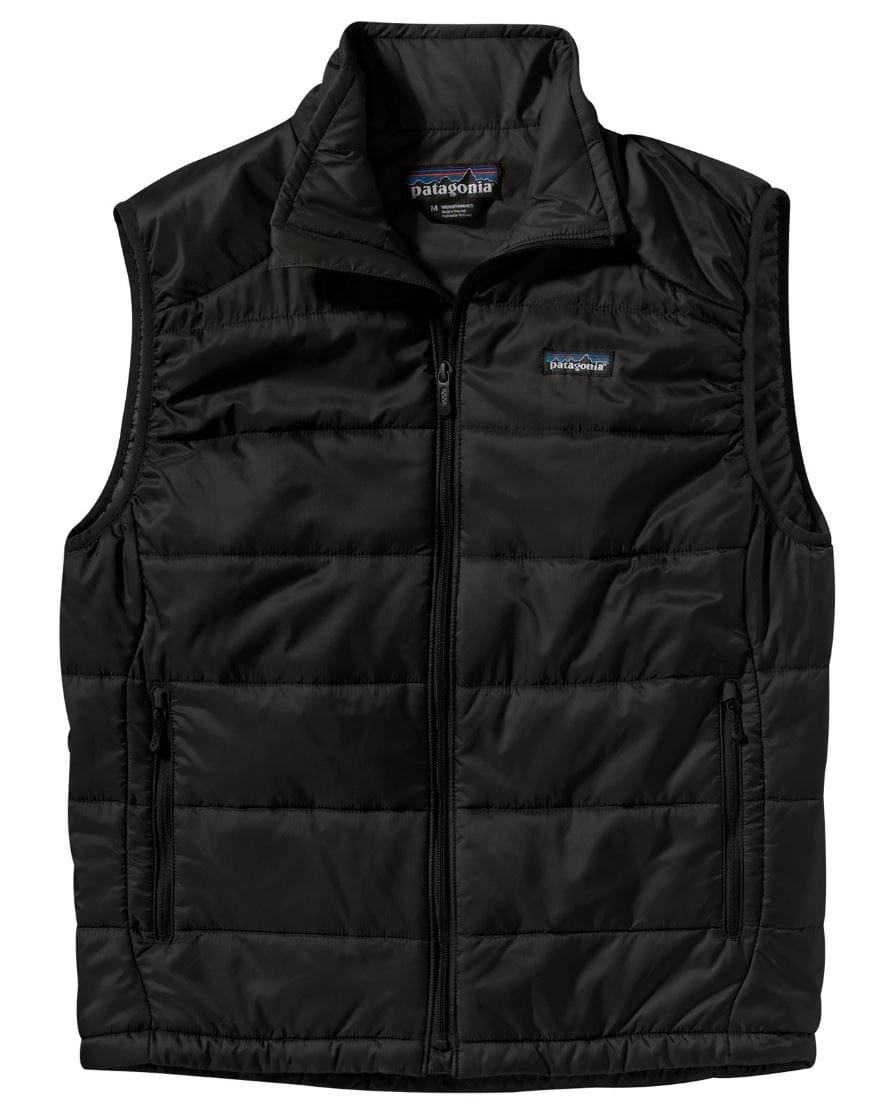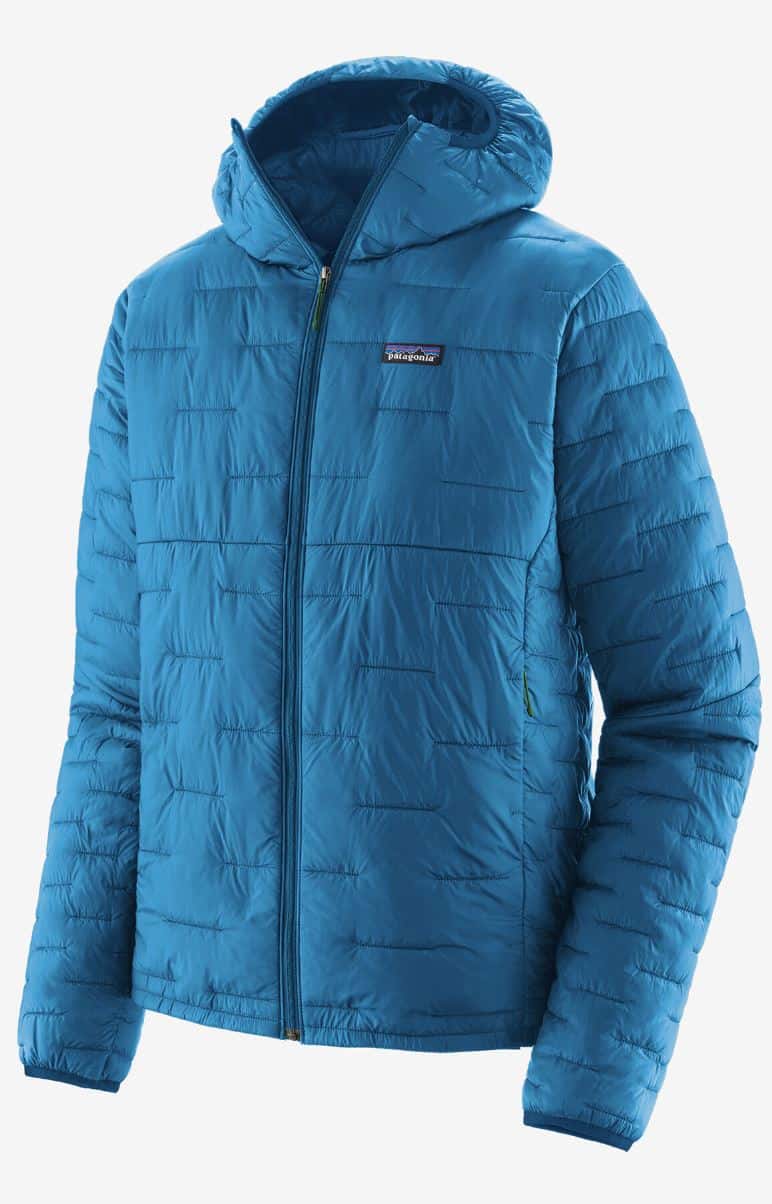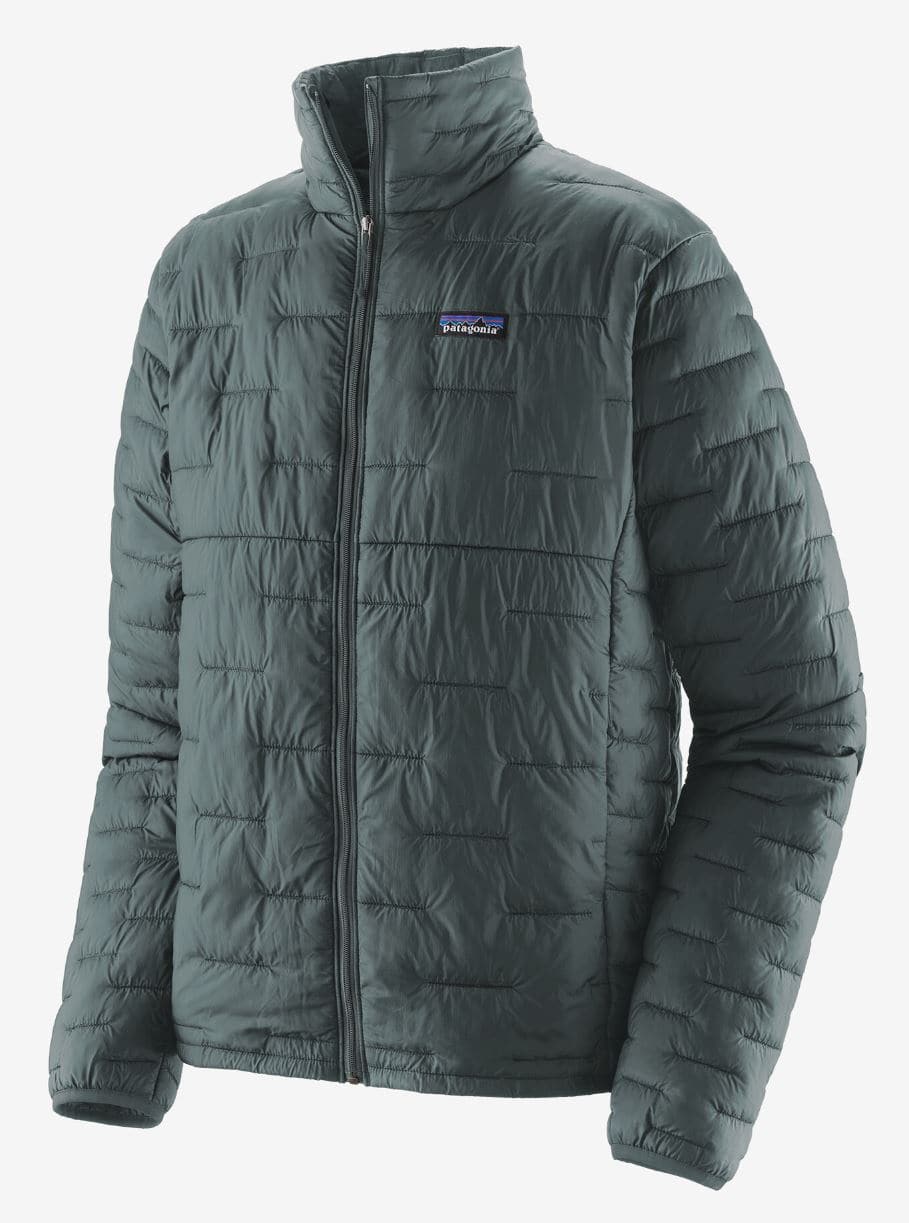With each passing year, there are more and more outdoor enthusiasts everywhere around the world. The direct consequence of this is an increased interest in synthetic jackets – they’re selling like hotcakes. Using new types of insulation and innovative thermal-reflective technologies, they provide much-needed comfort and warmth that the hikers need during their outdoor adventures.
And when it comes to synthetic jackets, none are as praised and well-known as the ones from Patagonia’s Nano Puff collection. In fact, these garments are so popular that Patagonia’s biggest rival, the North Face, came up with their own version – the Thermoball collection, (see the review ThermoBall vs Nano Puff). Patagonia’s answer to Thermoball is the all-new Micro Puff collection, whose job is to provide the warmth and comfort of their Nano Puff jackets – only better.
Both of these popular Patagonia collections are in high demand. If you’re in the market for a new jacket, vest, or hoodie, you’re probably wondering which one of these two lines is a better choice for your needs. To help you make an informed decision, we’ve decided to thoroughly explore all the differences between Patagonia’s Nano Puff and Micro Puff outerwear ranges. Read on!
Related:
Nano Puff vs Micro Puff – A Quick Overview
Besides the apparel type – vest, hoody, or jacket – one also needs to consider the packability, the insulation material, the type of fabric, as well as the weight of the garment. These and other factors can be of great help when you’re stuck between a couple of different models.
But first, let’s take a quick look at both of these Patagonia collections side-by-side:
Nano Puff Collection
|
Type |
Vest |
Hoody |
Jacket |
|
Insulation |
60-g PrimaLoft Gold Insulation Eco |
60-g PrimaLoft Gold Insulation Eco |
60-g PrimaLoft Gold Insulation Eco |
|
Fabric |
Ripstop shell, 100% recycled polyester |
Ripstop shell, 100% recycled polyester, DWR |
100% recycled polyester, DWR |
|
Weight |
227g (8oz) |
363g (12.8oz) |
337g (11.9oz) |
|
Packable |
Yes |
Yes |
Yes |
|
Price |
Check Price on Amazon | Check Price on Amazon | Check Price on Amazon |
Micro Puff Collection
|
Type |
Vest |
Hoody |
Jacket |
|
Insulation |
65-g 100% polyester PlumaFill |
65-g 100% polyester PlumaFill |
65-g 100% polyester PlumaFill |
|
Fabric |
Pertex Quantum ultralight nylon ripstop |
Pertex Quantum ultralight nylon ripstop |
Pertex Quantum ultralight nylon ripstop |
|
Weight |
162g (5.7oz) |
264g (9.3oz) |
235g (8.3oz) |
|
Packable |
Yes |
Yes |
Yes |
|
Price |
Check Price on Amazon | Check Price on Amazon |
Nano Puff vs Micro Puff – An In-Depth Comparison
As we already said, Nano Puff is the older of Patagonia’s two most popular apparel ranges. Many outdoor enthusiasts consider Nano Puff jackets, hoodies, and vests to be among the best on the market.
The Micro Puff collection, on the other hand, is the company’s latest innovation. Based on Nano Puff, it outperforms its older brother in several categories – it’s lighter, warmer, and more packable. However, Micro Puff garments are made out of the newest materials, which makes them significantly more expensive.
To help you spot the differences between these two collections, we’ve compared them in a number of important categories:
Warmth and Insulation
In the world of ultralight clothing, Nano Puff was the game-changer. When it first came out, this collection effortlessly outperformed most of its competition and quickly became the standard for lightweight outerwear.
Whether you’re a weekend hiker or a keen mountaineer, you simply can’t make a mistake by going for one of the garments from the Nano Puff collection. In simple terms, it’s an ultralight option that works just as advertised and sometimes even exceeds expectations. That is precisely the reason why so many competitors are still trying to copy Nano Puff’s approach to synthetic apparel.
The main culprit behind this collection’s high-quality performance is the well-known PrimaLoft synthetic insulation. In fact, Patagonia uses the best version of this insulation for their Nano Puff garments – PrimaLoft Gold Eco. Not only is this insulation stronger and lighter than the ones found in the jackets made by Patagonia’s rivals, but it’s also made out of recycled materials.
One particularly great feature of PrimaLoft is the fact that it works even when it’s wet. In other words, this insulating material successfully maintains an adequate temperature inside the garment no matter the current weather condition.
The MicroPuff garments, on the other hand, use PlumaFill insulation. This is an upgraded version of the PrimaLoft insulation which we mentioned above. It creates a better loft, it’s easier to dry out, and it also maintains better airflow and heating performance.
Another thing worth mentioning here is that MicroPuff’s outer nylon shell isn’t as thick. While this makes it less durable and weather-resistant, it also enhances the airflow throughout the entire jacket and speeds up moisture evaporation.
Weight and Packability
As a newer type of insulation, PlumaFill maintains better warmth while using fewer materials. PrimaLoft, on the other hand, is an older type and it’s bunched into fluffy clumps. Make no mistake – this insulation design still provides excellent protection from cold. The only downside is that it makes jackets from the NanoPuff collection relatively bulkier.
The type of insulation used in MicroPuff garments consists of stretched-out fibers. The long strands of PlumaFill are spread evenly throughout vests, hoodies, and jackets of the MicroPuff line. This, in turn, greatly increases the packability of these garments – they don’t require as much stitching and baffling.
As you can see in our quick overview table, MicroPuff is a clear winner when it comes to weight. By combining smart garment design with newer and better materials, Patagonia has created jackets, hoodies, and vests that are far more packable without sacrificing their performance.
Versatility and Pricing
Are you an avid outdoor enthusiast? If so, you probably know everything about the importance of wearing versatile outerwear – it makes journeys into the backcountry so much easier.
The garments from Patagonia’s Nano Puff collection can be used in all types of weather conditions. The synthetic materials used in the manufacture of these jackets allow users to wear them comfortably at temperatures of about 50°F. They are also very easy to layer up when used in lower temperatures.
The Micro Puff collection, on the other hand, successfully inherits these features and gives them an upgrade. These jackets feel great when worn at 50°F and they are equally easy to layer up in lower temperatures. However, they also perform better in wet conditions and are easier to dry and pack up.
Overall, Micro Puff is a clear winner in terms of warm-to-weight ratio. The clothes from this collection are among the most versatile in today’s outerwear market.
However, for some people, price is the most important factor. As we’ve already mentioned, the garments from the Micro Puff collection sport a better design and provide enhanced performance due to the newer insulation materials used in their manufacture. This, in turn, makes them significantly more expensive.
What do They Have in Common?
Both of these collections are designed as sports garments. They provide superb breathability, which turns them into an excellent choice for activities such as trekking, jogging, and skiing. The primary function of these clothes is to retain the body heat of their users while keeping them dry on the inside and the outside.
Keep in mind that the Nano Puffs and Micro Puffs are not proper winter jackets. They should be worn as mid-layers and used for activities that require warm and lightweight protection. Due to their performance in wet weather, they are particularly useful when worn during the spring and autumn months. They won’t, however, keep you warm during the freezing January nights.
Read our article How To Layer for Outdoor Activities.
Nano Puff vs Micro Puff – A Closer Look at Products
In this part of the article, we’ll be taking a closer look at three individual products from each of these Patagonia outerwear collections. We evaluated vests, hoodies, and jackets:
Patagonia Nano Puff Vest
Those looking for a casual outerwear option will find Patagonia’s popular Nano Puff Vest to be an excellent choice. Perfect for rainy spring days, this garment also works very well when used as an additional layer during winter. For rainy weather, we recommend wearing a lightweight rain jacket.
One particularly great feature of this vest is its ample arm space. As such, it provides the wearer with mobility while still keeping the cold at bay. We also liked the elastic draw at the bottom, as well as the stylish quilted block pattern.
PROS:
- Exceptionally comfortable yet mobile
- Comes with internal and external pockets
- Pairing it with other top layers is easy
CONS:
- Slimmer overall cut
Patagonia Nano Puff Hoody
Sometimes, wearing a beanie isn’t enough – you need a proper hood to protect your neck and the sides of your face. Patagonia’s Nano Puff Hoody is a perfect choice for such occasions.
Wearing this hoody at a temperature of about 50°F feels very comfortable, but it can also be used for layering in colder weather. In addition, it’s easier to pack than most down hoodies and looks quite sleek, although that’s something we’re used to when it comes to apparel made by Patagonia.
PROS:
- Polyester ripstop shell with a DWR finish
- Comes with a carabiner clip-in loop
- Internal stuff sack & chest pocket
CONS:
- Could be easier to dry
Patagonia Nano Puff PrimaLoft Jacket
The popular Nano Puff Jacket is undoubtedly a fantastic choice for all types of outdoor activities. It’s a highly versatile piece of apparel that works well for both casual hikers and professional mountaineers.
Besides keeping the cold at bay, this garment is also waterproof and windproof. Its PrimaLoft insulation is both compressible and lightweight – packing up this jacket is effortless.
PROS:
- Horizontal quilting pattern adds durability and stability
- Adjustable drawcord seals body heat
- Handwarmer pockets
CONS:
- Not suitable for excessively wet weather
Patagonia Micro Puff Vest
Just like other Micro Puff garments listed below, this vest is also made out of premium-quality materials. Not only does it provide down-like warmth, but it’s also very easy to pack and weighs less than its Nano Puff counterpart.
In addition, Patagonia Micro Puff Vest can be easily combined with other clothes when the weather gets colder. It’s very breathable as well – drying it out is as quick as it gets.
PROS:
- Highly compressible & lightweight
- Versatile – easy to combine with other clothes
- Made out of recycled materials
CONS:
- Armholes could be bigger
Patagonia Micro Puff Hoodie
Those looking to take their hiking adventures to the next level won’t make a mistake by going with this popular hoodie. Patagonia Micro Puff Hoodie is better at keeping the user warm than its Nano Puff counterpart.
In addition, the model sports a Pertex Quantum GL shell that effortlessly keeps the moisture at bay. It also weighs less than most similar jackets, even though it comes with a hood.
PROS:
- Excellent warmth-to-weight ratio
- Breathable inner lining & water-repellent shell
- Successfully retains heat during cold weather
CONS:
- Not durable enough for extreme activities
Patagonia Micro Puff Jacket
Just like in the cases of Micro Puff vest and hoodie, this jacket takes the good things about Nano Puff garments to the next level. As it comes equipped with the PlumaFill insulation, the Patagonia Micro Puff Jacket is both very compressible and lightweight.
As expected, it provides the user with more warmth and comfort than its Nano Puff cousin. Moreover, the jacket dries very quickly while its weather-resistant outer shell protects the wearer from rain and wind.
PROS:
- Highly versatile – suitable for all outdoor activities
- Highly packable & featherlight
- Convenient drop-in pocket
CONS:
- Outer layer not as durable as that of the Nano Puff Jacket
No products found.
Nano Puff vs Micro Puff – The Verdict
So, which one of these two collections is better? As in most cases, there is no clear-cut answer – it all depends upon your budget and planned activities. There is no doubt that both models are some of the best Patagonia winter jackets on the market.
If you’re in the market for casual outerwear that is versatile, robust, stylish, and which provides above-average warmth, you won’t make a mistake by going with one of the Nano Puff garments. On the other hand, those looking for exceptionally lightweight outdoor apparel that’s both highly compressible and weather-resistant should opt for one of the Micro Puff garments instead.
In case you haven’t decided yet, read a detailed review of Nano Puff vs Down Sweater and find out how Nano Puff stands against a different model.

I love hiking, backpacking, and camping. From the Camino de Santiago to the West Highland Way in Scotland or simply a great day hike on the weekend. Hiking refreshes me, my mind, and keeps my body reasonably fit. So far I have walked three Camino routes and many other long distance hikes in the UK, Canada, and around the rest of Europe. One of the best was my hike up Ben Nevis.


